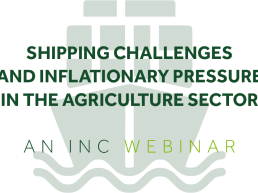
Dr. Alireza Pourreza
Associate Professor at the University of California, Davis. Director of the Digital Agriculture Laboratory at UC Davis. Founder of Kobin Analytics (kobin.com). Dr. Pourreza leads digital agriculture, remote sensing, and precision farming research and extension. His work emphasizes data-driven tools to enhance crop yield and sustainability.
Embracing the intersection of technology and agriculture, California’s almond growers are embarking on a path to enhanced productivity. The fusion of aerial drones and artificial intelligence promises a transformative approach to yield forecasting.
Almonds have captured the hearts of consumers worldwide, and California stands as the leading producer in the United States. With the global demand for almonds on the rise, precision management of resources and accurate yield forecasting have become essential for sustainable almond production. In a recent study,[1] the Digital Agriculture Lab at UC Davis has combined the power of aerial drone imagery and cutting-edge artificial intelligence technology to revolutionize almond yield forecasting.
The integration of aerial drones with artificial intelligence is transforming agriculture beyond almonds. These high-flying cameras, paired with intelligent algorithms, can monitor crop health, soil conditions, and even pest and disease patterns. For farmers, this means more accurate data, quicker decisions and better crop yields. It’s a leap forward in using technology to make farming more efficient and environmentally friendly.
Achieving optimal almond yield depends on several critical factors, including the number of flowers, successful fruit development and the average kernel weight. However, these variables are influenced by various factors, such as weather conditions, tree health, irrigation practices and pollination efficiency. Accurate yield forecasting is vital for growers to achieve sustainable almond production and optimize resource management. In our study, we utilized a yield forecasting technique that can be applied in February, during bloom time —considerably earlier than other remote-sensing-based forecasting approaches, which are typically used after full leaf-out in late March.
We employed aerial drones equipped with high-resolution cameras to capture RGB images of almond orchards during the bloom period. These images provided valuable data on bloom density, which estimates the number of flowers per unit area. To analyze this vast amount of data efficiently, we harnessed the power of deep learning, i.e., a subset of artificial intelligence that goes a step beyond traditional machine learning. While conventional machine learning algorithms rely on specific instructions and manual feature selection, deep learning models learn from the data. They can achieve more accurate predictions by identifying patterns and connections within vast datasets. U-Net is an advanced deep-learning model well-known for its exceptional image segmentation capabilities. We achieved astonishing accuracy by training the U-Net model on a diverse dataset of almond bloom images. The model successfully identified a significant proportion of flowers with high precision (81%), accuracy (93%) and recall (65%).
One of the most significant findings of our study was the strong correlation between bloom density and crop load. Bloom density represents the concentration of flowers, while crop load indicates the number of nuts produced per tree (or per acre). Our results revealed the correlation between bloom density and crop load, providing almond growers valuable insights for predicting within-field yield variability.
Accurate yield forecasting is crucial due to new legislation mandating nitrogen application rates based on expected crop yield. Almond growers can use bloom density estimates to make data-driven decisions for precision nitrogen management, maximizing yields while minimizing environmental impact and adhering to regulations.
As part of the study, we also explored the utility of satellite imagery for yield prediction compared to dronebased imaging. While satellites offer valuable insights into bloom density at the block level, their low spatial resolution falls short of precise individual tree-level predictions. Highresolution aerial drone data remains the preferred option for detailed yield forecasting.
The automated approach to bloom density estimation using drone imagery and deep learning models offers a timeefficient and accurate alternative to conventional visual inspection of almond blossoms. By reducing the need for ground vehicles and manual labor, growers can streamline orchard management and optimize resource allocation.
This research marks an exciting progression in early yield forecasting, recognizing that the connection between bloom density and yield is richly nuanced. While bloom density plays an essential role, other impactful factors such as temperature, pollination conditions and flower quality equally contribute to shaping the crop load. These elements add a fascinating layer of complexity to the prediction process, offering additional opportunities for exploration and innovation.
Early yield forecasting is more than technological advancement; it’s a vital tool for almond growers in California. Knowing what to expect enables informed decisions on how much water, fertilizer and labor are needed. It ensures compliance with California’s strict water and fertilizer usage regulations and environmental care. Advanced knowledge also helps strategize market approaches, negotiate contracts early and plan supply chain logistics. It allows for identifying potential threats or weaknesses early enough to take preventative action. All these benefits translate to efficient resource management, better financial planning and alignment with sustainability goals.
The convergence of drone technology and deep learning has unlocked new horizons for almond yield forecasting. With this innovative approach, almond farming can become more sustainable, resource-efficient and responsive to market demands. As global almond consumption continues to rise, these technological advancements in agriculture will play a pivotal role in securing a fruitful future for almond growers worldwide. By harnessing the power of drone imagery and deep learning, the almond industry is well-positioned to meet the growing demand while ensuring a greener and more prosperous future.
For more information about the findings of the study, consult the openaccess article at: https://doi.org/10.1016/j.compag.2023.108

Photo: Digital Agriculture Lab, University of California, Davis.
[1] Chakraborty, M., Pourreza, A., Zhang, X., Jafarbiglu, H., Shackel, K.A., DeJong, T. (2023). Early almond yield forecasting by bloom mapping using aerial imagery and deep learning. Computers and Electronics in Agriculture, 212, p. 108063.
Related Articles
15 September 2021
